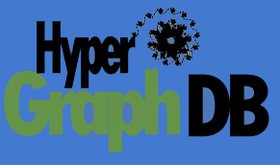HyperGraphDB
HyperGraphDB is an extensible open-source graph-based data storage engine. It implements the ability to store hypergraph relationships, which make it suitable for complex data and knowledge representation problems. It relies on a tuple as its unit storage, where both n-ary relationships and graph orientated relationships are allowed as relationships between tuples. It uses BerkeleyDB as its key value store, and operates as an object-orientated database for Java.
Query Interface
HypergraphDB supports a special API specific to its atoms, but doesn't support any particular querying language. Query objects called HGQuery filter all atoms by submitting the condition to a query processor, and it returns a list of atoms. Details on the API can be found in its javadoc.
Website
Source Code
https://github.com/hypergraphdb
Tech Docs
http://www.hypergraphdb.org/?project=hypergraphdb&page=LearnHyperGraphDB
Developer
Kobrix Software
Country of Origin
Start Year
2007
